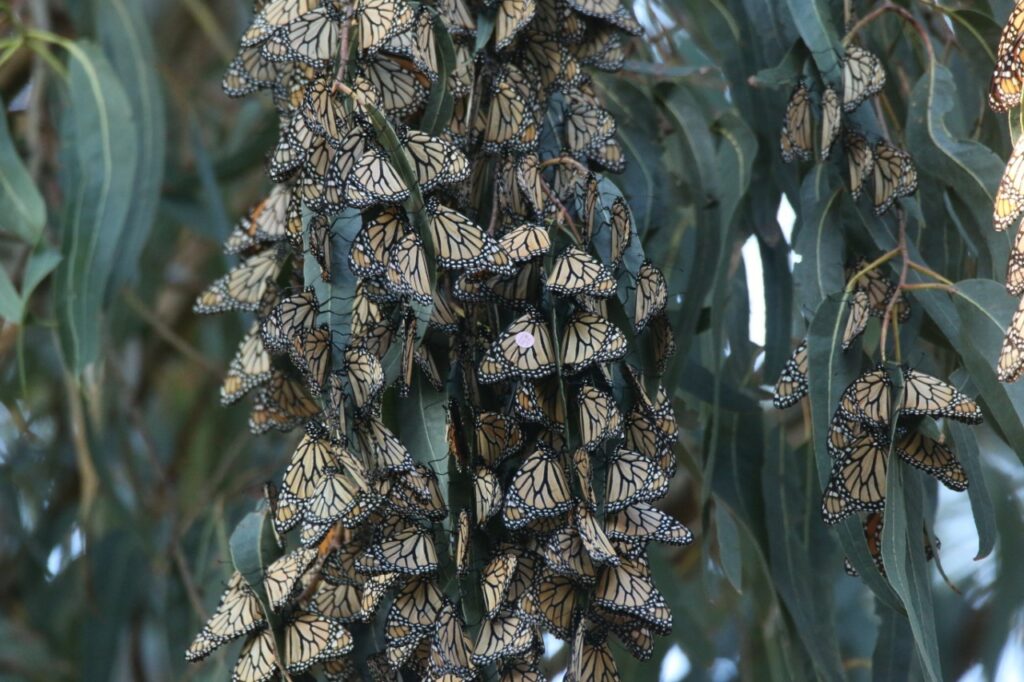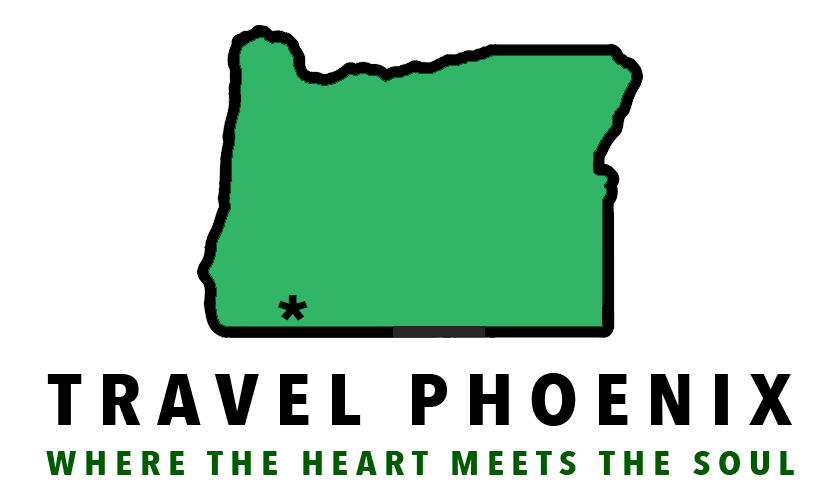Photo Credit: Monarch Butterflies in the Pacific Northwest Facebook page
A creature’s existence within an ecosystem is affected by many different factors, one of which is the overall health of the environment. How people treat the world around them, whether it’s in their own backyards or on local hiking trails and forests, impacts plants, animals, birds and insects.
Where the butterflies travel
According to Robert Coffan with Southern Oregon Monarch Advocates, Southern Oregon plays an important role in the overall health and existence of the migrating western monarch butterfly population.
“Our area is the first ‘stepping stone’ for the generations that leave the overwintering sites of the southern and central California coast each spring to start the new migrating generation each year,” he said.
It is also the last ‘break time spot’ for the super generation that migrates back each fall from areas to the north and east.
How people interact with nature impacts local pollinators. These actions may have good or bad consequences which stretch far beyond the immediate area.
A healthy environment helps pollinators and other species. But when it’s unhealthy or treated poorly, that has a negative effect. And sometimes, what we do in our own corner of the world has far-reaching impacts. The monarch butterfly is one of our few “long distance” pollinators. What we do in Southern Oregon and Northern California impacts pollinators as they migrate throughout the western United States.
To illustrate this, Coffan shared Facebook posts from Dr. James, who checked on monarchs at overwintering sites during the ongoing Thanksgiving Western Monarch Count. These posts are included below.

Posts from Dr. James
November 22
I am traveling this week visiting monarch overwintering sites in coastal California from the Pismo Beach area up to Bolinas, north of San Francisco. While I’ve only visited 13 sites so far, I’ve seen an estimated 80,000 monarchs at these few sites, which bodes well for the overall count.
One of the reasons for this trip (aside from the pure enjoyment and magical experience of being in the presence of these butterflies) is to look for tagged monarchs from the Pacific Northwest. I’m happy to say, I’ve spotted two so far! The first one I found on November 21st at Pismo Beach State Park, home to one of the largest overwintering colonies, numbering this year around 24,000 individuals.
After an hour of scanning most of these butterflies, I found a tagged monarch up high, where most of the butterflies are roosting. Fortunately, my spotting scope allowed me to read the number: G6578. This female was reared and released by Paula Caplinger in Ashland, Oregon on September 2nd. This butterfly flew at least 500 miles to join the other 23,999 monarchs at Pismo Beach! My thanks go to Paula for rearing and tagging this butterfly.
November 22
Jessica Griffiths is a monarch advocate in many ways. She has worked with and for monarchs for nearly 20 years on the central California coast. She is the San Luis Obispo County coordinator for the annual Western Monarch Thanksgiving Count and on the planning committee for the International Western Monarch Summit, which will be held in San Luis Obispo in January 2023.
Jessica has found a number of Pacific Northwest-tagged monarchs over the years, her latest being a male found near Gaviota, California. Jessica found and photographed G6777 during an early morning count on November 22nd. This monarch was reared and released by Ling Helphand and Paula Caplinger in Ashland, Oregon on September 21st; it flew at least 550 miles to reach Gaviota. Paula and Ling also reared and released G6578, which we sighted at Pismo Beach on November 21st. Two tag recoveries from these ladies in two days! Thank you to Jessica, Ling and Paula for making this tag recovery happen!
November 23
The second tag recovery of our monarch road trip was found at a little-known but spectacular overwintering site at Cambria, just north of Cayucos, California. I found G6812 on November 22nd in the company of another 12,000 monarchs roosting on pine trees in a mostly deciduous woodland. This male monarch was reared by Vanessa Henson in Phoenix, Oregon and released on September 30th. It flew at least 470 miles to find its winter home.
While Pismo Beach gets much attention with more than 35,000 monarchs at three or four sites, the tiny hamlet of Cambria is currently home to almost 20,000 overwintering monarchs at two sites. Similarly, just four sites in and around Cayucos currently harbor 25,000 monarchs. Conservatively, there are more than 80,000 overwintering monarchs along a 50 mile stretch of the California central coast right now! The count for the 200+ overwintering sites when made public should make us all very happy indeed!
November 23
Over the past decade in which we have been rearing and tagging monarchs in the Pacific Northwest, some people and/or locations seem to generate more than their fair share of tag recoveries. We don’t know the reason for this yet.
One example is Belinda Vos, who rears and tags monarchs in Talent, Oregon. Since 2017, Belinda has reared, tagged and released 1,306 monarchs and has had 18 of these found in California. This is a recovery rate of nearly 1.4%, way above the normal recovery rate for Oregon of about 0.9%.
Belinda’s winning streak is continuing this winter, with two tag recoveries, one from Santa Barbara, California and one from San Leandro, California. A third one — G7792 — I found high up in a cluster of monarchs roosting in a tall eucalyptus tree at Natural Bridges State Park in Santa Cruz, California on November 23rd. Belinda released G7792 on October 7th and it flew at least 367 miles to get to Natural Bridges.
Supporting the monarch migration Southern Oregon is a critical stepping stone for western monarchs as they migrate northward from the California overwintering sites each spring. The health and wellness of our local environment plays an important role in their journey. Through a variety of restoration work and awareness of the world around us, people are creating a safe haven for the monarchs.
Photo Credit: Monarch Butterflies in the Pacific Northwest Facebook page

